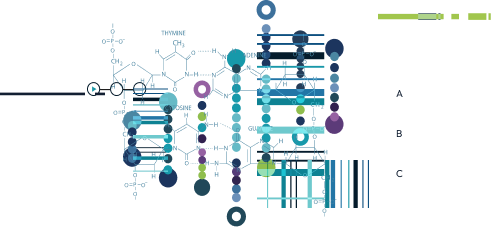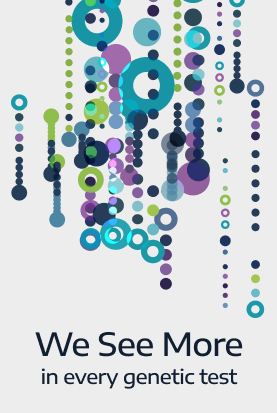News Center

Expanded coverage of repeat expansion loci
- By Variantyx, Inc
- Posted in Clinical Education
With a growing number of different pathogenic repeat expansions linked to human disease, genetic testing for this unique class of mutations is an important component of the diagnostic process for many patients. Particularly those experiencing symptoms associated with developmental delay, neuromuscular and neurodegenerative disorders.
In previous posts, we’ve talked about the role of repeat expansions in fragile X syndrome and inherited ataxias. We’ve also detailed the strategy that our proprietary algorithms use to detect these and other repeat expansions as part of our Genomic Unity® testing methodology. A test which is uniquely based on clinical whole genome sequencing (WGS).
Today we’re excited to share that we’ve expanded the number of pathogenic repeat expansion loci covered in this single genetic test to a total of 21!
Pathogenic repeat expansion loci screened by Genomic Unity®
| Loci | Repeat | Disorder |
| AFF2 | CCG | Fragile XE syndrome |
| AR | CAG | Spinal and bulbar muscular atrophy |
| ATN1 | CAG | Dentatorubral-pallidoluysian atrophy (DRPLA) |
| ATXN1 | CAG | Spinocerebellar ataxia 1 (SCA1) |
| ATXN10 | ATTCT | Spinocerebellar ataxia 10 (SCA10) |
| ATXN2 | CAG | Spinocerebellar ataxia 2 (SCA2) |
| ATXN3 | CAG | Spinocerebellar ataxia 3 (SCA3) |
| ATXN7 | CAG | Spinocerebellar ataxia 7 (SCA7) |
| ATXN8OS | CTG | Spinocerebellar ataxia 8 (SCA8) |
| C9ORF72 | GGGGC | Frontotemporal dementia and/or amyotrophic lateral sclerosis (FTDALS1) |
| CACNA1A | CAG | Spinocerebellar ataxia 6 (SCA6) |
| CNBP | CCTG | Myotonic dystrophy type II |
| CSTB | CCCCGCCCCGCG | Myoclonus epilepsy |
| DIP2B | CGG | FRA12A fragile site |
| DMPK | CTG | Myotonic dystrophy type I |
| FMR1 | CGG | Fragile X syndrome |
| FXN | GAA | Friedreich’s ataxia |
| HTT | CAG | Huntington disease |
| JPH3 | CTG | Huntington disease-like 2 syndrome |
| PPP2R2B | CAG | Spinocerebellar ataxia 12 (SCA12) |
The expansion is the result of ongoing refinement and calibration of our algorithms.
